Playing popular songs with Arduino and a buzzer
Buzzer is used to generate sound, beep or even melody of a song. It can be found in alarm devices, computers, timers and confirmation of user input such as a mouse click or keystroke. A piezo buzzer is not like a regular speaker that you might think of. It uses a material that actually changes shape when you apply electricity to it which in turn creates noise. The faster you bend the material, the higher the pitch of the noise that is produced.
Prerequisites
To understand the inner workings of the buzzer, we suggest checking out our article on How to use a buzzer with Arduino.
Components
| 1x Arduino Nano (or another Arduino module)
|
| 1x Mini-breadboard
|
| 1x Buzzer
|
| Dupont wires
|
| Pitches library and melodies |
Wiring schema
Pairing an Arduino and a piezo buzzer is easy. The buzzer is equipped with two pins: one for signal control and another for ground. In the setup below, the tone control will be managed by Arduino's D9 pin.
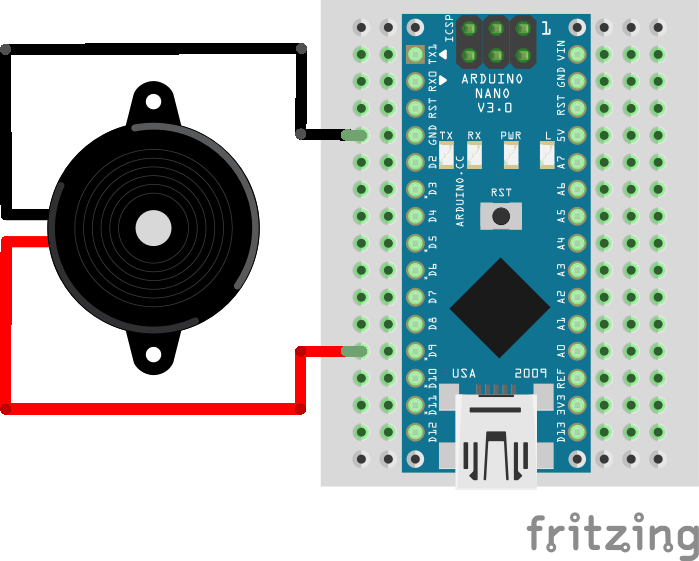
Importing pitches library
The code used to generate the melody uses an extra library available on our GitHub. This file contains all the pitch values for typical notes.
To import a library, open the Arduino IDE, go to Sketch > Include Library > Add .ZIP Library and select the library file downloaded from our GitHub repository.
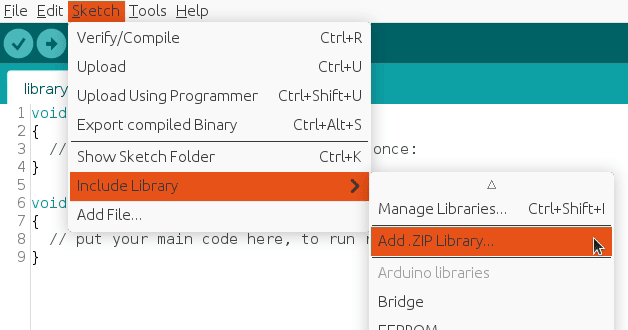
Then you can simply use include statement:
#include "pitches.h"
It will include the library with predefined pitch constants so the melody generation becomes easier.
Arduino code
The main program uses two arrays, melody and durations, to define the sequence of notes and their corresponding duration, respectively. The loop() function will iterate over notes and and use assigned duration for each note. A pause between notes is introduced to distinguish them, calculated as the note's duration plus 30%. After playing a note, the noTone() function stops the buzzer to prevent any lingering sound.
#include "pitches.h"
#define BUZZER_PIN 9
int melody[] = {
// Notes goes here
};
int durations[] = {
// Notes duration goes here
};
void setup()
{
pinMode(BUZZER_PIN, OUTPUT);
}
void loop()
{
int size = sizeof(durations) / sizeof(int);
for (int note = 0; note < size; note++) {
//to calculate the note duration, take one second divided by the note type.
//e.g. quarter note = 1000 / 4, eighth note = 1000/8, etc.
int duration = 1000 / durations[note];
tone(BUZZER_PIN, melody[note], duration);
//to distinguish the notes, set a minimum time between them.
//the note's duration + 30% seems to work well:
int pauseBetweenNotes = duration * 1.30;
delay(pauseBetweenNotes);
//stop the tone playing:
noTone(BUZZER_PIN);
}
}
Note: tone() function uses one of the built in timers on the Arduino’s micro-contoller and works independently of the delay() function. Use of the tone() will interfere with PWM output on pins 3 and 11 (on boards other than the Mega).
This program provides a flexible framework for creating simple melodies by adjusting the contents of the melody and durations arrays. Users can customize the musical composition by populating these arrays with different note frequencies and durations.
Popular songs
At the moment, the following melodies are available. The list can be updated with new ones based on user requests. So, feel free to leave a comment with melodies you would like to hear.
Songs
It's a small world - contributed by @Wizmann
Movies
Squid Game (NEW)
Games
Other
Credits
Official GitHub: https://github.com/hibit-dev/buzzer


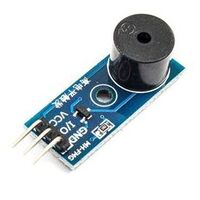



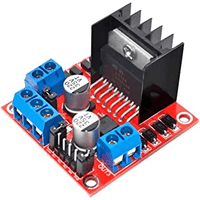
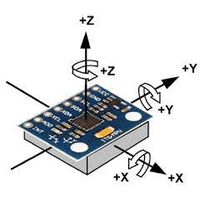

58 Comments
Vihanga Nethmaka Reply
Bro, can you add a few more anime songs? Like Otonoke, Kakumei Dōchū: On the Way, Rumbling, Kick Back, Sparkle, Kiss of Death, and Iris Out (Yeah, that's a lot! :) )
I really appreciate your service! Keep up the great work.
Dexter Lotz Reply
can you please add AKIRA - Kaneda's Theme and Dr. Dre - Still D.R.E. ft. Snoop Dogg !?
HiBit Reply
Dr. Dre ft Snoop Dogg - Still D.R.E. has been added.
Enjoy!
N1X0 Reply
Can you please make a mp3 to Buzzer decoder.
HiBit Reply
It's not possible to make a direct MP3 to buzzer decoder because a buzzer (especially a typical piezo buzzer) can only produce simple tones at specific frequencies, not complex audio like speech or music. MP3 files contain compressed, multi-frequency audio data far beyond what a buzzer can reproduce. At best, you could extract a basic melody or rhythm if the MP3 is extremely simple (like single-tone music), but decoding full MP3 audio into something a buzzer can play accurately isn't feasible.
Matthew Henriks Reply
kick back from chainsaw man and SPECIALS from jujutsu kaisen please
Matthew Henriks Reply
SPECIALZ
HiBit Reply
Jujutsu Kaisen - Specialz has been added.
Enjoy!
Mori Yanti Reply
it's Nice, can i play song Blue - Yung Kai pls add 🙏
HiBit Reply
Yung Kai - Blue has been added.
Enjoy!
Cj catlin Reply
Can you please add first day out by tee grizzley
HiBit Reply
First day out has been added.
Enjoy!
Jlocke1776 Reply
Great stuff, could you add Vanilla Ice - Ice Ice Baby?
HiBit Reply
Vanilla Ice - Ice ice baby has been added.
Enjoy!
Aditya Sarkar Reply
Please upload Ezio's Family from Assassin's Creed 2
HiBit Reply
Assassin's Creed 2 - Ezio's Family has been added!
Enjoy!
Tara Singh Reply
can u add living on a prayer please please please
HiBit Reply
Livin' on a prayer has been added.
Enjoy!
dacheezeman Reply
Hello, can you please add Kerosene By crystal castles. Would be great for a project i am currently working on. Thanks!
HiBit Reply
Crystal Castles Kerosene has been added.
Enjoy!
dacheezeman Reply
Thanks so much!
Itay Reply
Doom does not work for some reason :(
HiBit Reply
The Doom melody requires more memory than others, so make sure your board can handle that amount. If not, you will usually encounter an error during compilation.
As a workaround, you can try removing some of the notes (along with their respective durations) to fit the melody on the board.
Anastasiya Reply
Hi, is it possible to add additional memory to the board?
HiBit Reply
The board has built-in memory. If additional memory is needed, an alternative board can be used.
Emre Mandıra Reply
hey, can you add Coldplay - Hymn For The Weekend, please?
HiBit Reply
Coldplay - Hymn for the weekend has been added.
Enjoy!
yoki hetoro Reply
Hi. It would be awesome if you could add the German folk song Was wollen wir trinken!
HiBit Reply
Was wollen wir trinken has been added.
Enjoy!
Олексій Сальков Reply
Hello, can you add Richard Marx - Right Here Waiting
Please.
HiBit Reply
Right Here Waiting has been added.
Enjoy!
Monika Berkova Reply
Thank you for answering requests. Awesome
Олексій Сальков Reply
Thank you very much
Natalie Majano Reply
Is there anyway you can do coogie by dijon? or talk down by dijon?
HiBit Reply
We couldn't find notes for that song that will sound good with a buzzer.
Monika Berkova Reply
Hello, could you please add Never Gonna Give You Up by Rick Astley
HiBit Reply
Never Gonna Give You Up has been added.
Enjoy!
Zelvet Reply
Could you please Add: End of Beginning by Djo?
HiBit Reply
We just added End of Beginning by Djo.
Enjoy!
Sherlyn Reply
pls do It’s You by Max feat. Keshi. I’m making a gift for my anniversary:)
HiBit Reply
It's you song by Max feat Keshi has been added.
Happy anniversary!
yabba dabba do Dhhrnr Reply
can you add original subway surfers theme
HiBit Reply
Subway Surfers theme song has been added!
lilblueyes Reply
I created a We Are the Champions theme adaptation, available on my GitHub. Check it out!
https://github.com/lilblueyes/WeAreTheChampions-Arduino-Buzzer